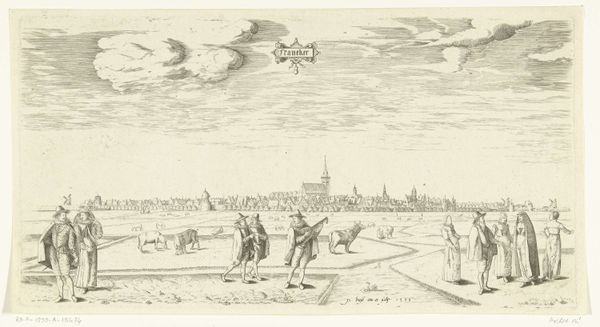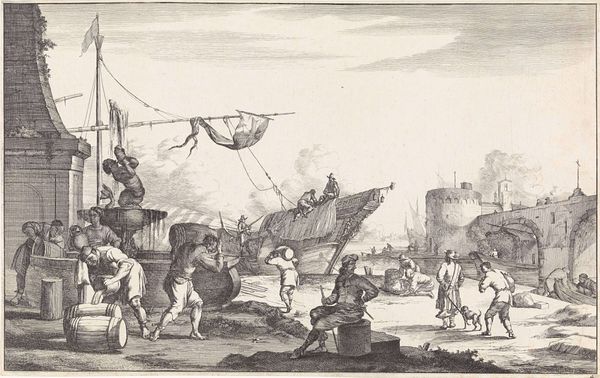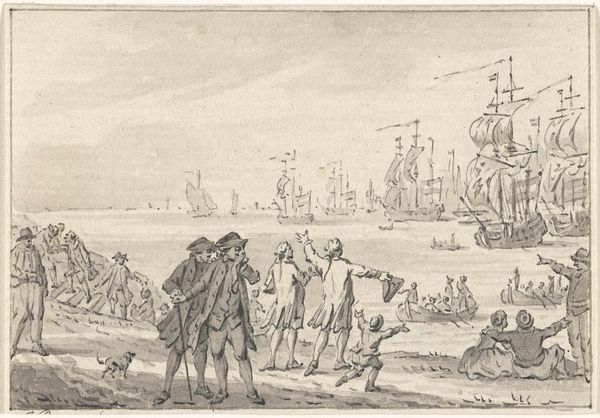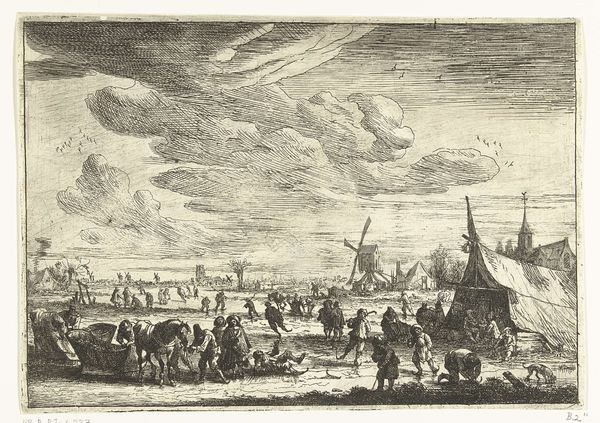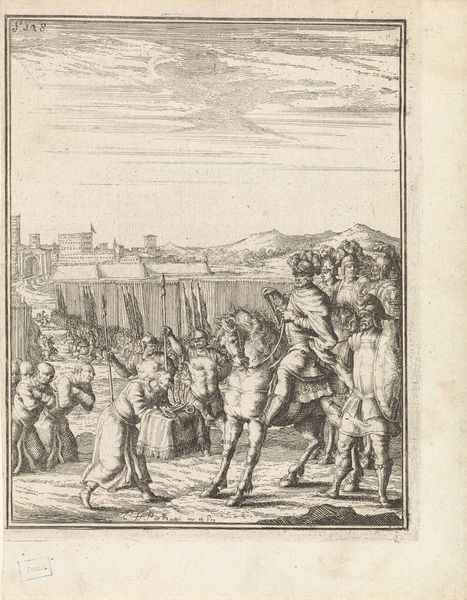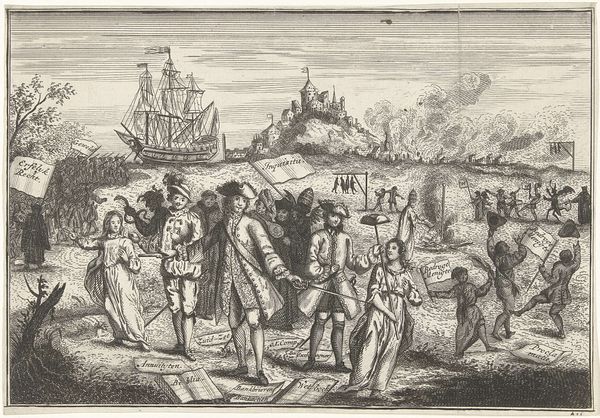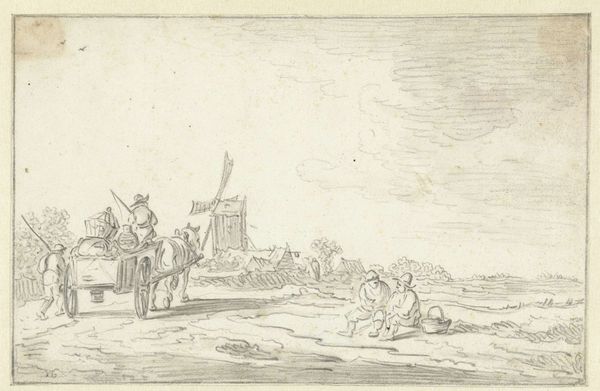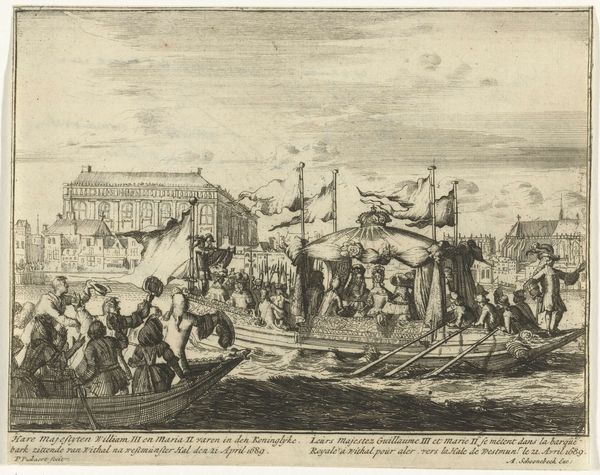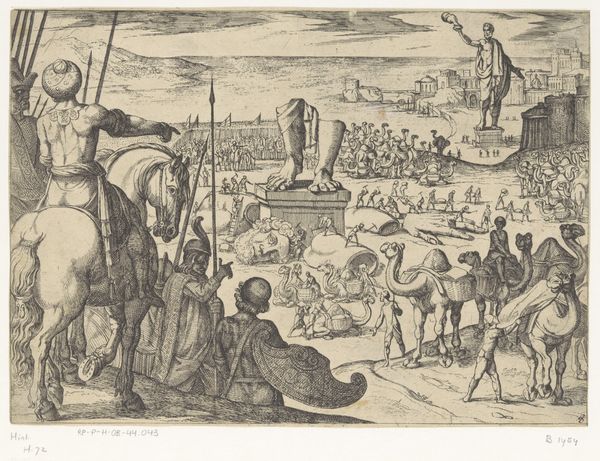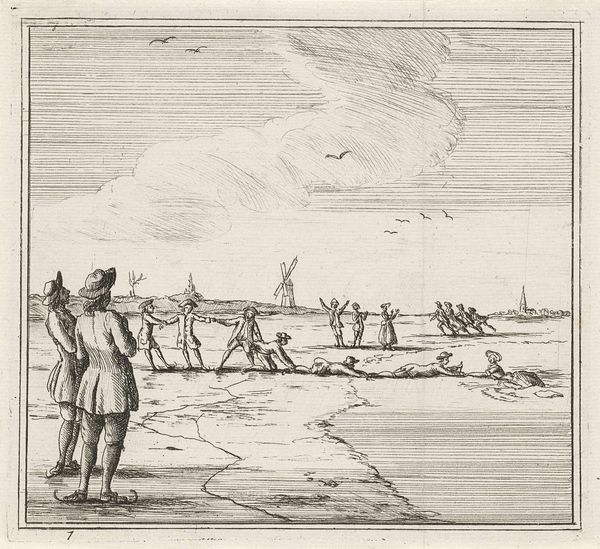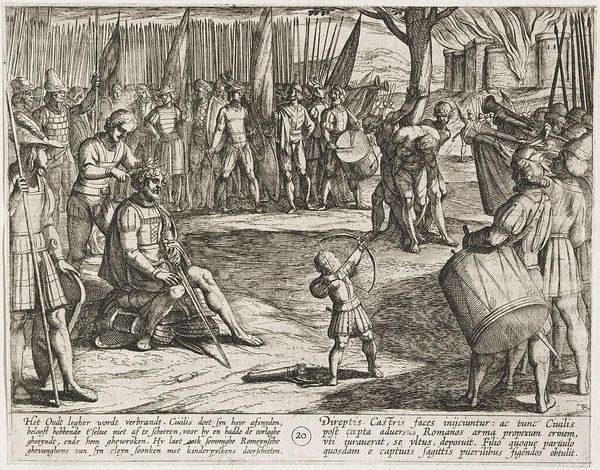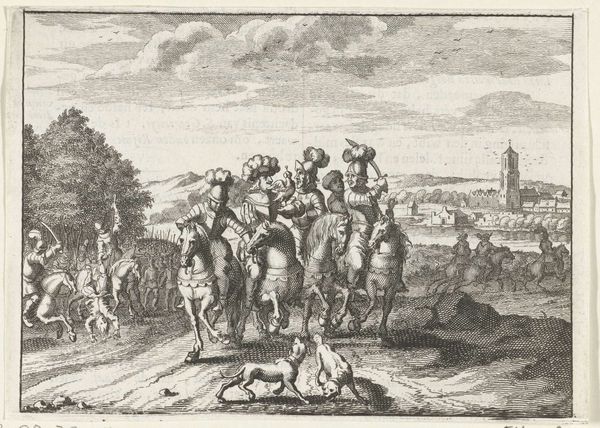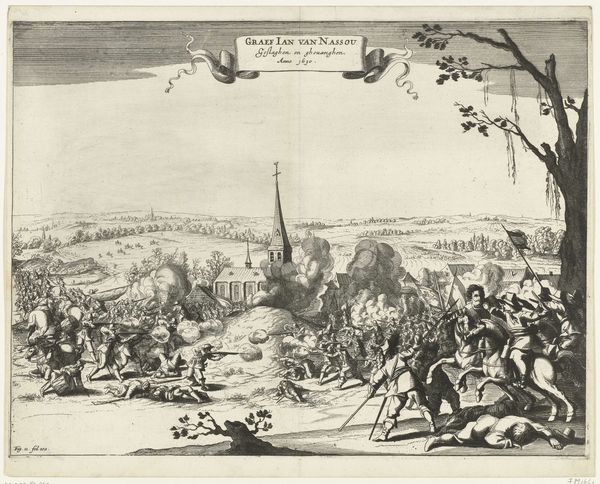
print, engraving
#
dutch-golden-age
# print
#
landscape
#
figuration
#
genre-painting
#
engraving
#
realism
Dimensions: height 142 mm, width 157 mm
Copyright: Rijks Museum: Open Domain
Editor: This engraving, "Skaters on Ice," by Rienk Jelgerhuis, dated 1765, captures a lively winter scene. I’m immediately drawn to the figures; they're rendered with such energy, especially the person who has fallen on the ice! What strikes you most about this piece? Curator: I see a snapshot of 18th-century Dutch life, but also a commentary on social roles and anxieties. The fallen figure, likely female, relies on a man's assistance, which highlights the gendered power dynamics inherent in even leisure activities. Who has the privilege of participating without the threat of symbolic or literal falls? Editor: That's a great point! I hadn't considered the imbalance there. Does the setting – the frozen landscape and the windmill – contribute to this reading? Curator: Absolutely. Landscapes are never neutral. The windmill, a symbol of Dutch ingenuity and prosperity, also hints at the resources required to manage and even 'conquer' nature. Who benefits from this perceived control, and at what cost? Are we considering issues of class as well here as figures on the ice might have been elite members of society? Editor: So you're saying the scene isn’t just a charming depiction of winter fun, but a subtle exploration of social power structures? Curator: Precisely. It prompts us to consider who has access to public space, whose stories are centered, and what norms are being reinforced. Look closely, too, at the unmentioned labor required to get ready for skating - was this labor divided inequitably as well? How might it impact us today? Editor: I hadn't approached it that way, but I see how this image provides insights into the social and cultural landscape of its time. It’s about more than just skating! Curator: Exactly! By looking through a contemporary lens we begin to unpack not only history, but also interrogate what persists today.
Comments
No comments
Be the first to comment and join the conversation on the ultimate creative platform.
